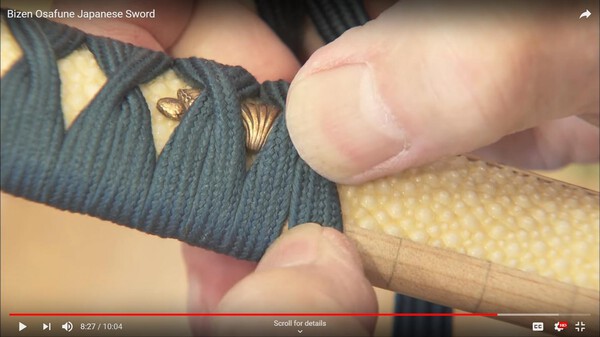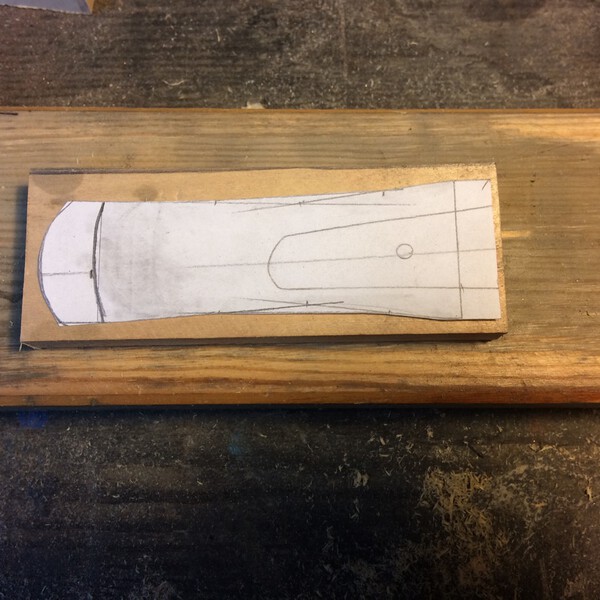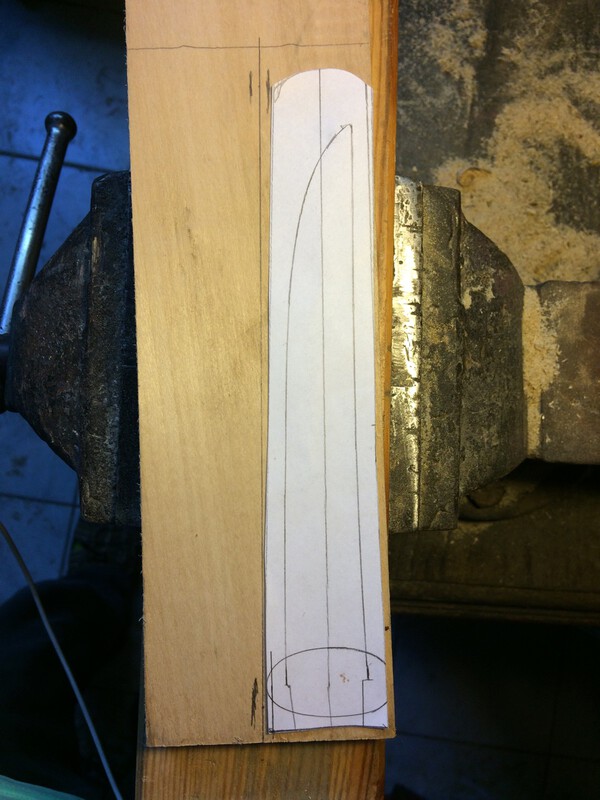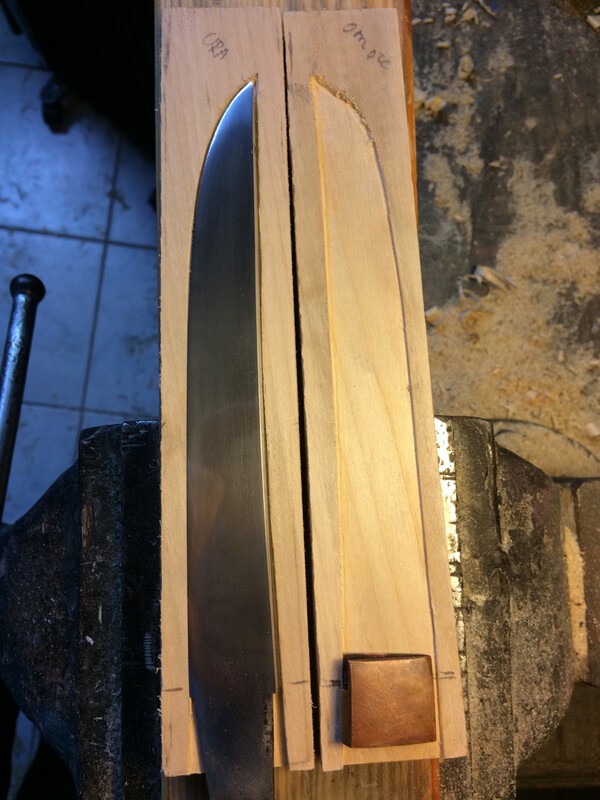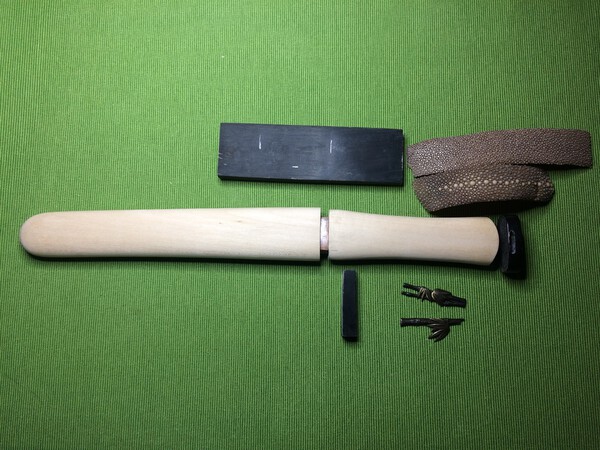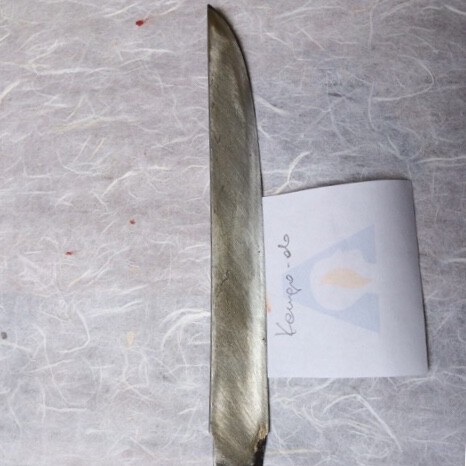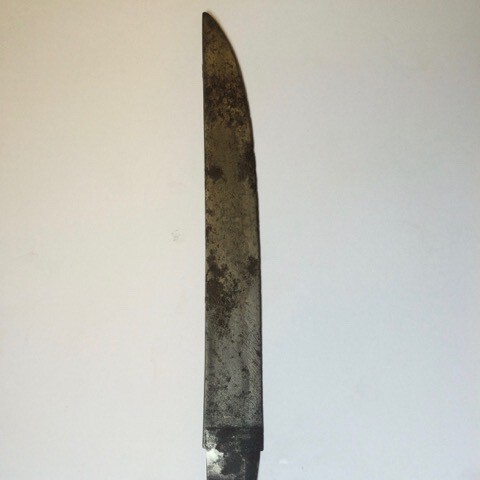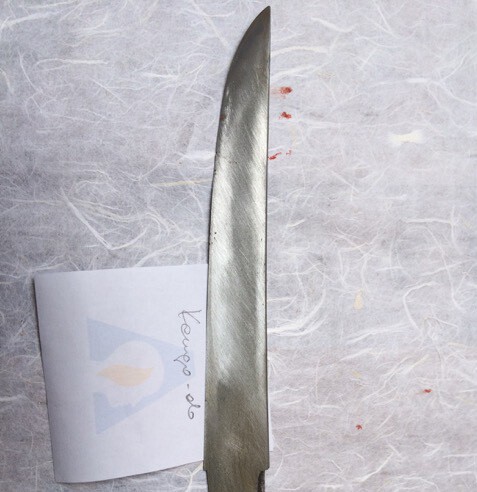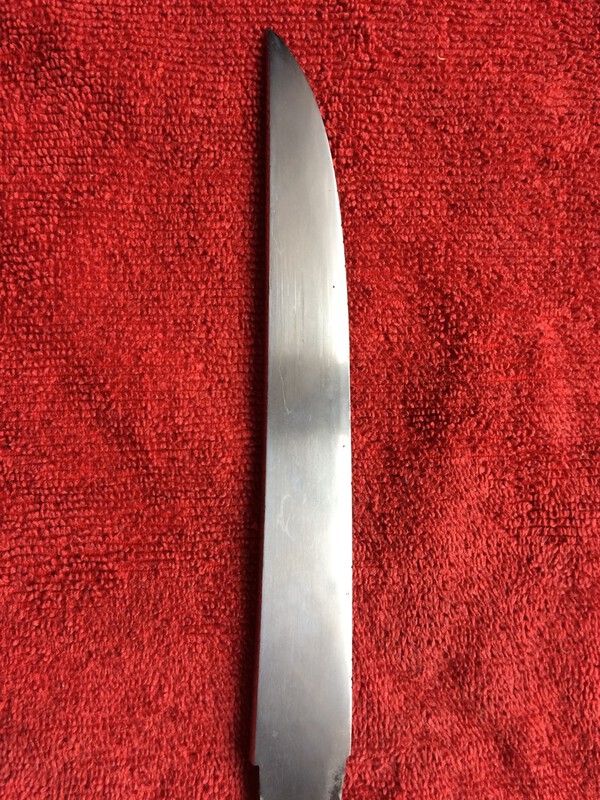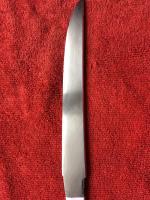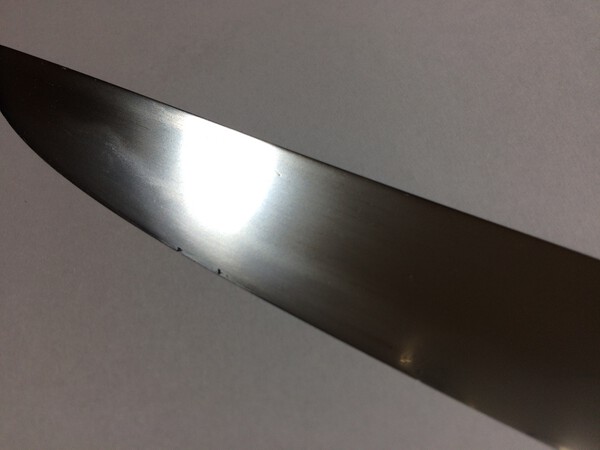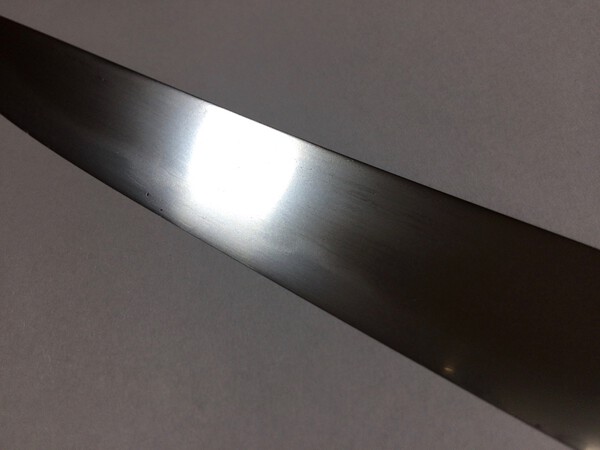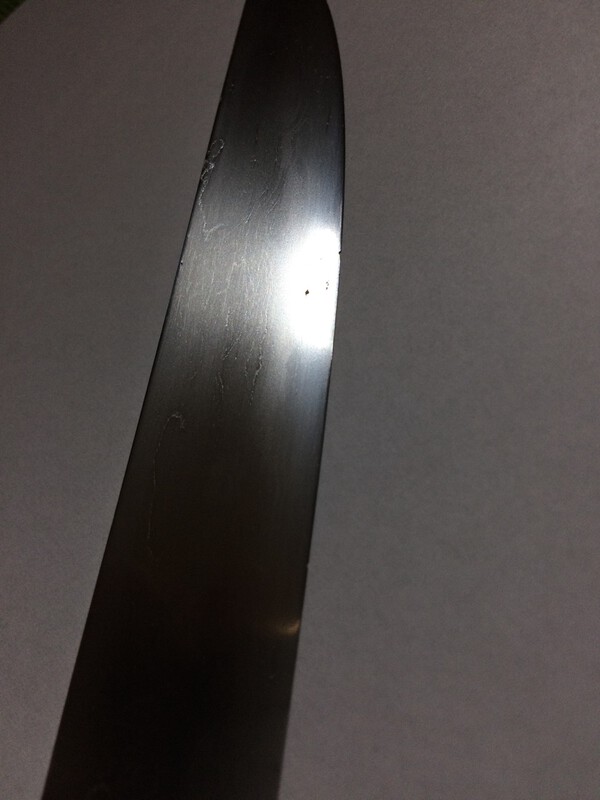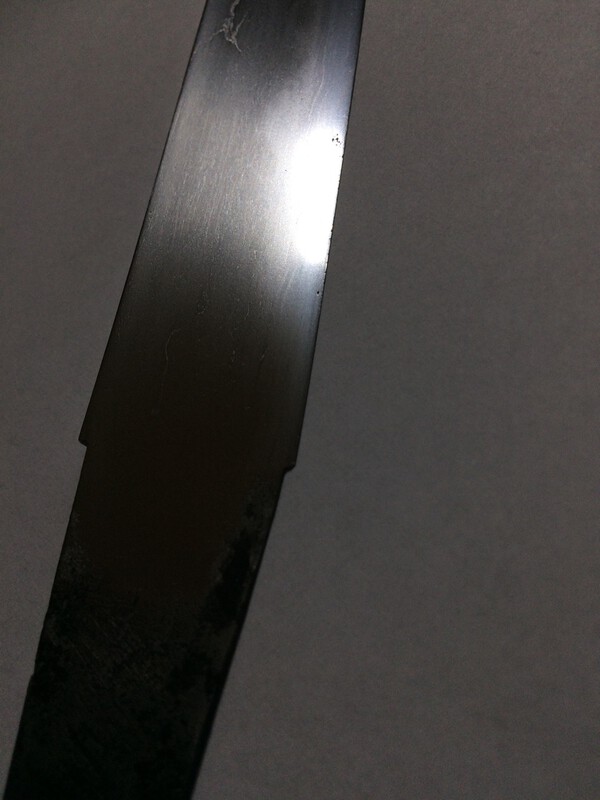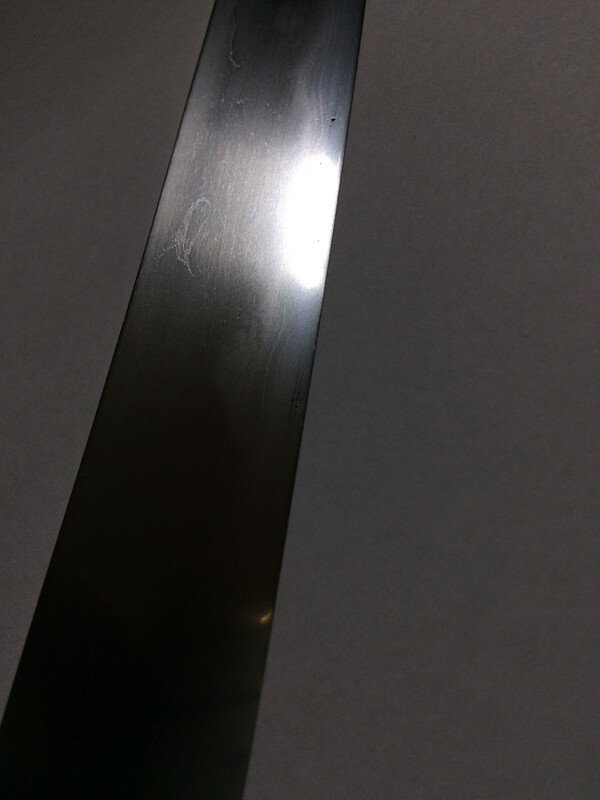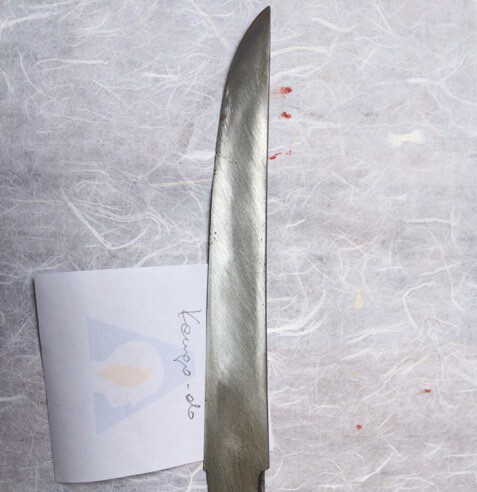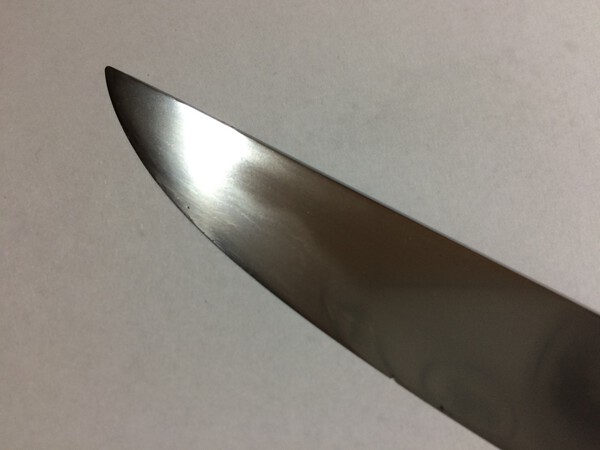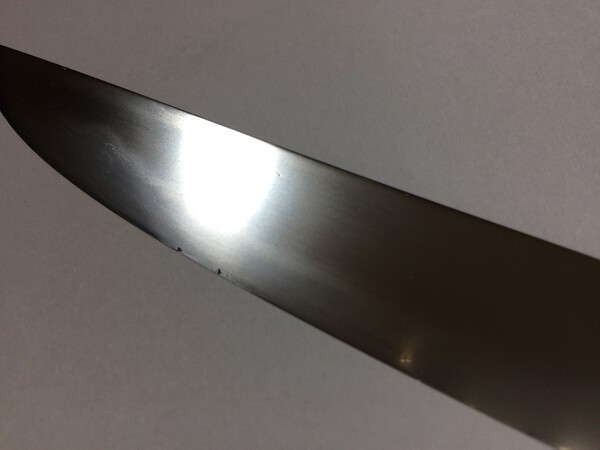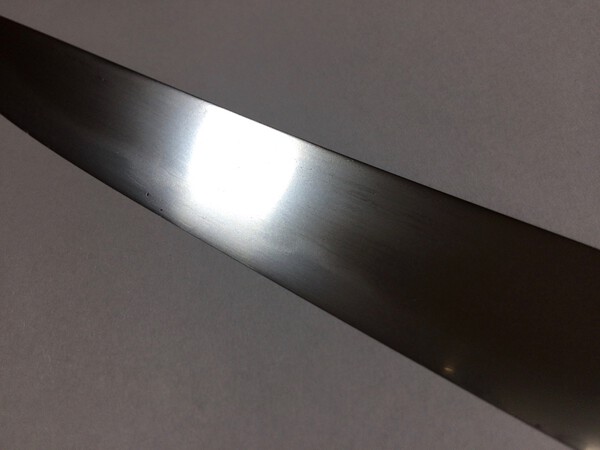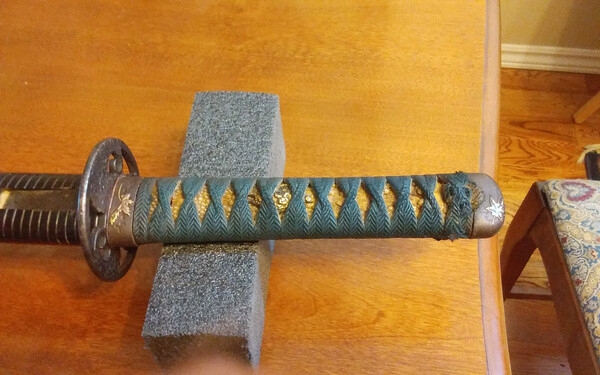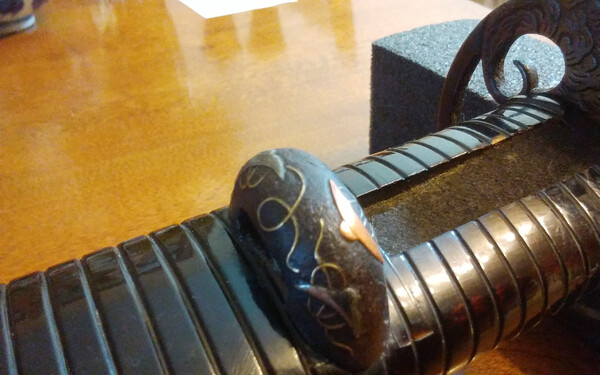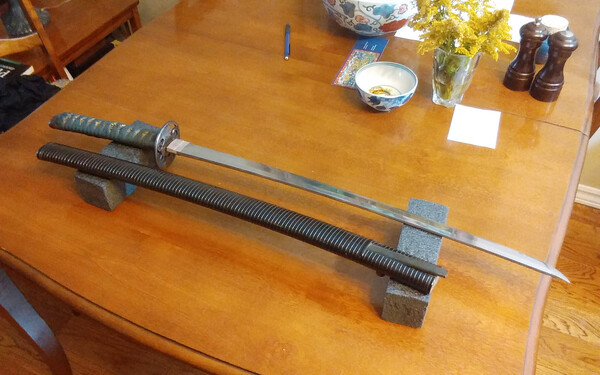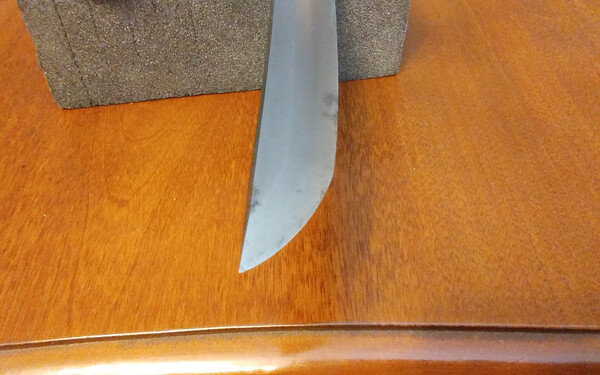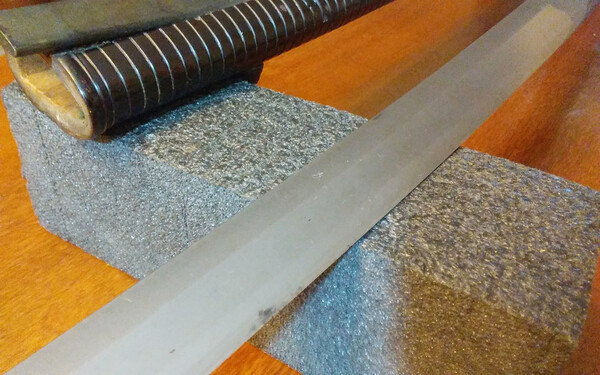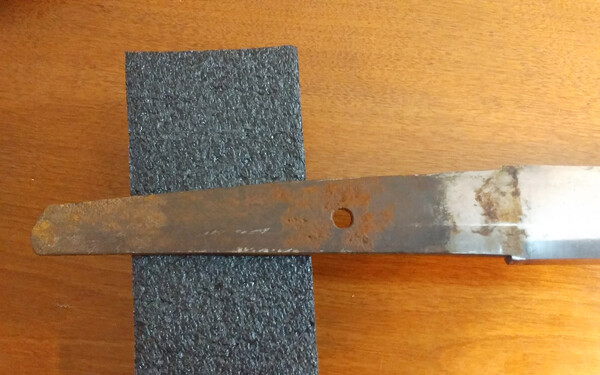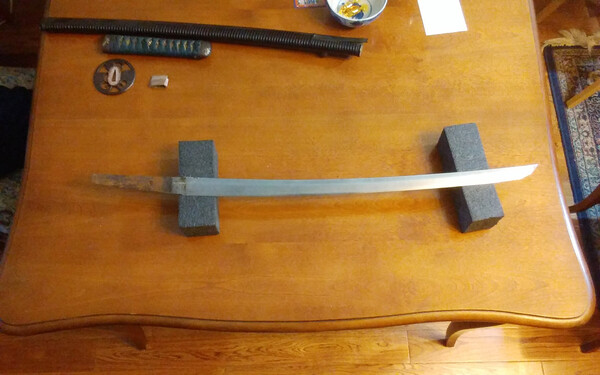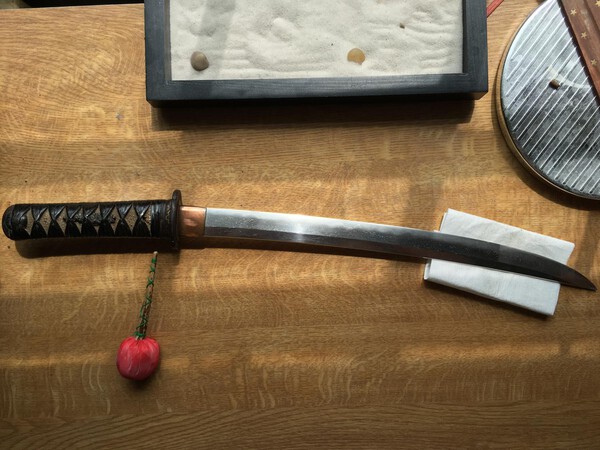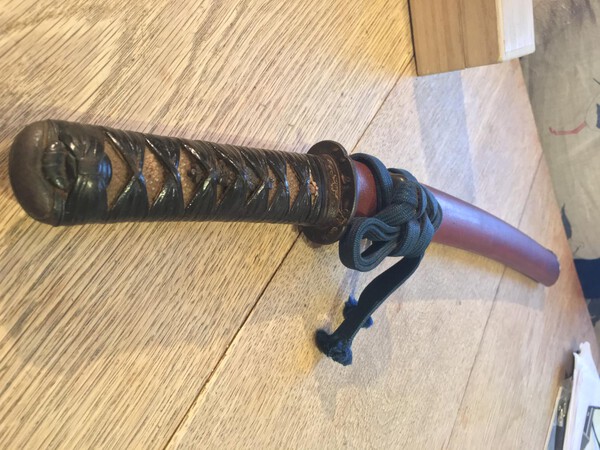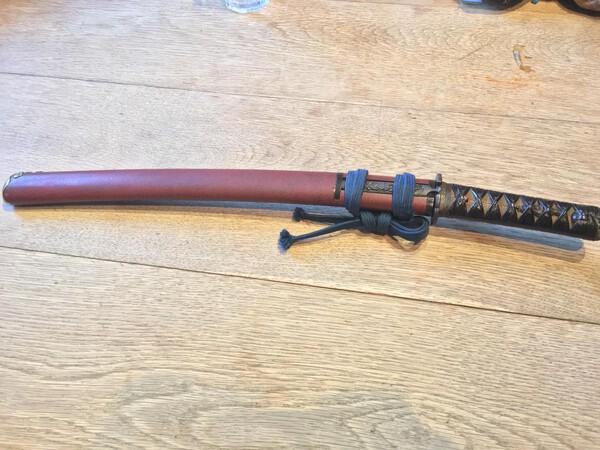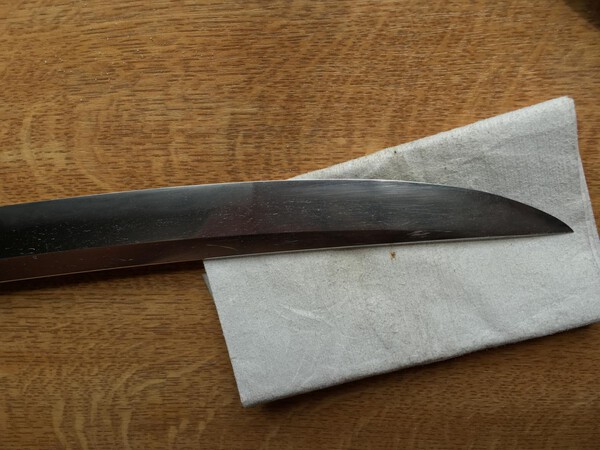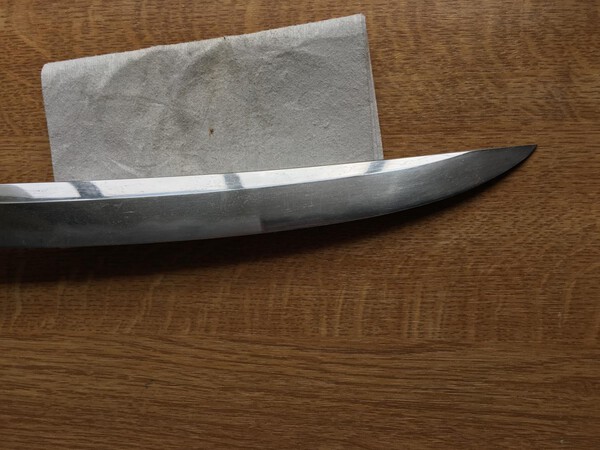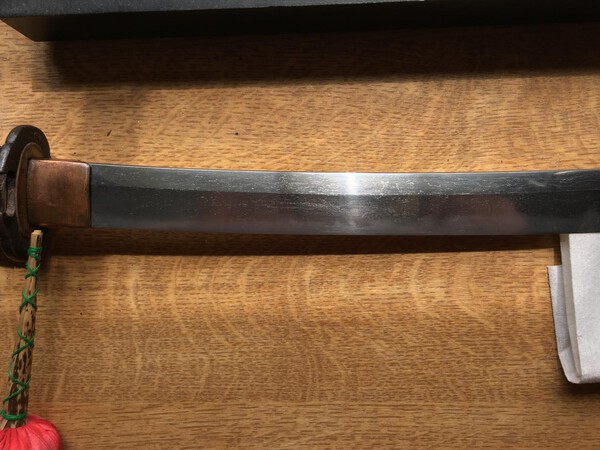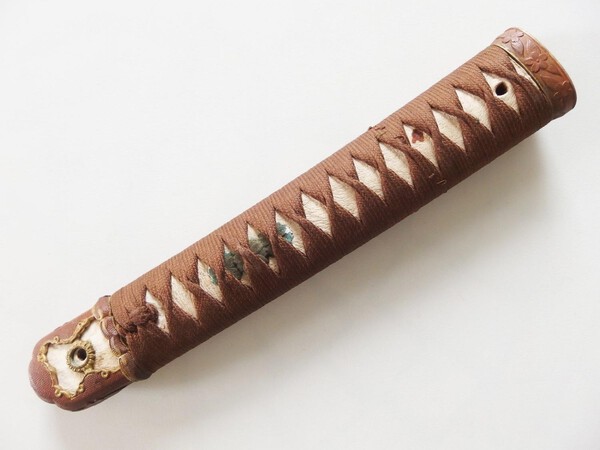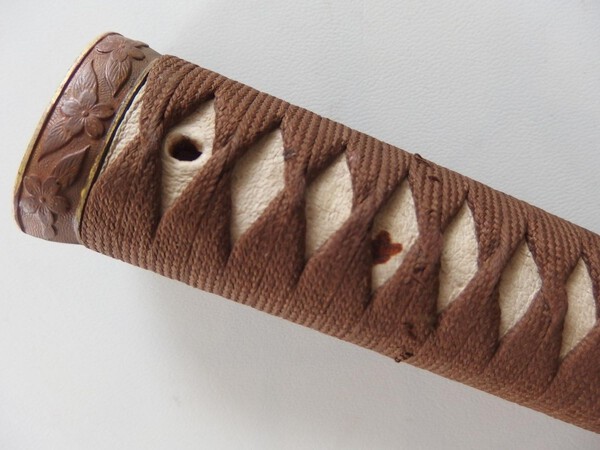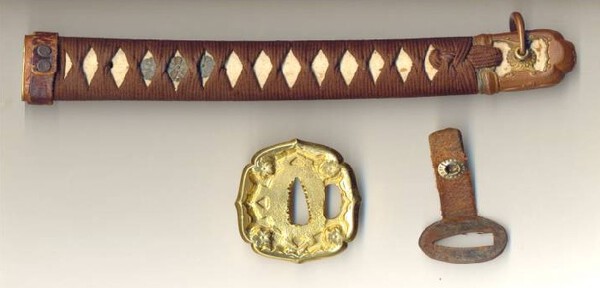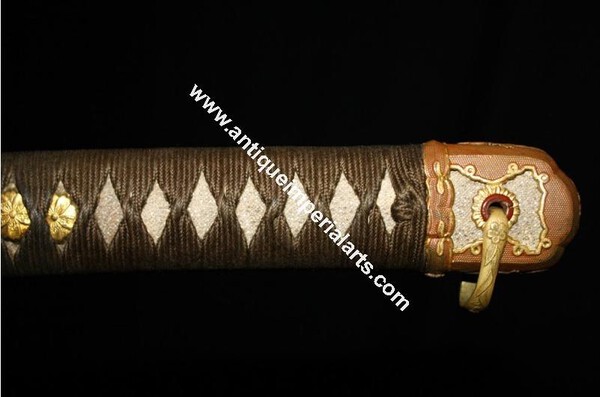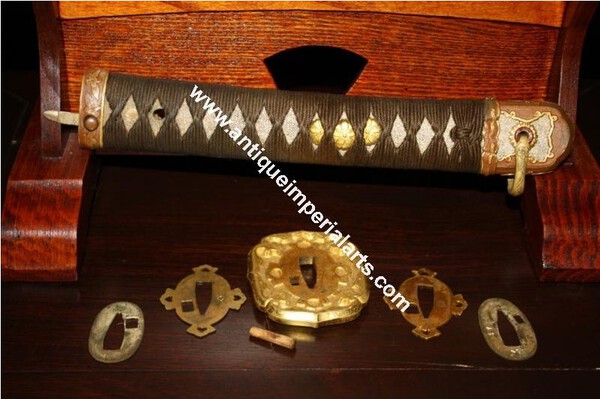Search the Community
Showing results for tags 'tsukamaki'.
-
Hello, This summer I am going on a trip to Japan and was intending on bringing back home some sword fittings as souvenirs to display. I have two questions regarding this: 1. Do fittings need to be de-registered or is that just for blades since they're weapons? What about a whole Koshirae with a wooden Tsunagi? 2. Say I buy some fittings (a Tsuba, Menuki and Fuchi/Kashira), and that they are all for the same type/size of sword, with the Fuchi being the right size to cover what it should on the bottom of the Tsuba, is it possible to get a custom Tsuka (non-hollow, as it wouldn't hold a blade) made and wrapped to display the fittings, with a little protruding piece to hold the Tsuba? Has something like this ever been made? Sorry if this is a stupid question. Best regards, Zachary
-
So, after watching a couple of old films (1962's Harakiri and 1955's Bloody Spear at Mount Fuji), I noticed a few of the main characters tsukas were wrapped in what appeared to be a single, flat piece of black leather (smooth, not twisted strands) - rather than Ito cord etc. Now, I've basically come to expect Tsuka Ito as the default - but was this always the case? ...or, am I just noticing film prop details that aren't relevant to real nihonto or the period?
-
I just got notified that my second Nihonto in in transit from Japan. It will hopefully be here by Thursday. It is another sunnobi tanto. Photos from Aoi Art are attached. When I have it in hand I will post some more pictures. This blade passed Hozon in June.
-
Hello, first time here finding this all fascinating! i was wondering if anyone could help with shedding some light on what these markings mean. Photos are not great as my sister took them and sent to me so difficult to see the marks clearly. ive yet to get my hands physically on it as still arranging import. The story: Ive just inherited this. Grandfather acquired this sword in Singapore in 1945 at the Japanese surrender. we even have a picture of him climbing back aboard his vsl holding the sword.(see below) (modelling below is my nephew) Apparently they had it made blunt many years ago as worried an intruder might use it... Looks to me like a Army Type 98.officer sword...although the tassel is more of an NCO type... and i think attached to the wrong part at the moment. although its not a tassel as such but a leather thing. But im after anymore information that you can shed on this especially on the characters on the Tang and the handle. im devouring the other threads for further knowledge and info! Many thanks indeed!
- 13 replies
-
- tsukamaki
- manufacture
-
(and 1 more)
Tagged with:
-
This is from a video about Bizen's sword museum. At first glance I thought it was a partial samegawa wrap like on cheaper production swords but upon closer inspection, the narrow strips of wood are on the outside which seems to indicate it is indeed a full same wrap. I thought it'd be optimal to have as much of the ito to have direct contact with the same to prevent slippage due to the bumpy texture. Since rays aren't native to Japanese waters, who did they trade with to get the skins? I wonder how they came up with the idea to use ray skins on a tsuka in the first place.
-
I don’t know if this is the right place, but here goes. As I recall, some fair while ago someone on here was looking for a tsukamaki stand. Unfortunately there were none available at the time, not even in Japan (I asked). You had to build your own. Well now there is one available. I’ve just spent the last 2-3 months researching, experimenting, designing, and woodworking to create a prototype, then getting the prototype to production. Not content with that, I observed that tsukamaki was a rather under-resourced art. People had to hunt all over the web for what was available, then hunt around for plans for what wasn’t in order to build it. This seemed a bit silly and incredibly time wasting to me so, so I asked a number of tsukamaki-shi what they used and what they needed, and have pulled a load of stuff together into one section. I haven’t quite finished yet. There’s a few other items needed, particularly clamps. I’ve had a look at a few commercial items but it mostly looks like I’ve got to fire up the forge and make a prototype. I’ll do what I can to keep the price down – it all depends on how long it takes to make, though I may be able to shorten the time with a jig for making the overall shape for the two halves. https://www.ryujinswords.com/tsukamaki
-
I bought a blade with habaki, so I need to make everything else myself. Koshirae: I decided to make aikuchi with buffalo horn fittings with flower motif
-
saved blade... sashikomi finishing. Blade was very rusty. I started my work with kongo-do Then I used next step stones after uchigumori-do I used hazuya and jizuya Send Your feedback, please.
- 1 reply
-
- restoration
- polishing
-
(and 1 more)
Tagged with:
-
This sword was owned by my grandfather. The fuchi, kashira, tsuba and shito-dome are iron. The blade length is 22" to the mune-machi. There is no signature that I can see. Would this blade be appropriate for practicing Iado or katas? The wood tsuka core is cracked through the menuki-ana, and the ito and same are badly deteriorated. I want to use the existing menuki, fuchi and kashira to build a new tsuka, although I do feel kind of bad about unwrapping the old handle. Right now there is no way to secure the blade due to the crack in the old tsuka. I'm interested in any information about the origins of the blade and koshirae. Thank you very much!
-
For Sale - Early Koto Wakizashi - O-Kissaki In Koshirae
Atsumori posted a topic in For Sale or Trade
Early Koto Mumei Wakizashi - O-kissaki shinogi-zukuri Blade in older polish In Koshirae with iron Higo style fuchi & kashira with gilt inlay Old shakudo menuki and a rare Higo wrap of lacquered paper ito carved in tsunami maki Saya red matt with tooled brass kojiri and slot for kogai Habaki yamagane Blade length: 37.3cm Sori: 0.7cm Moto-haba, thickness at the Hamamachi: 2.6cm Kasane, thickness at the Hamachi: 0.5cm Era: Early koto £1950 for collection in London or SE UK or I will ship to UK/EU/ US -
Hello Gents, I have recently been looking at Koshirae in more detail and have come across a few Tsuka where Samegawa has not been used, they all just happen to be in Gunto mounts. The first couple of pics could either be low quality same or another material, The second pic comes from a Amahide blade on the UK to-ken society sword register. Finally the last couple of pics come from a Tsuka currently for sale on Ebay. What is the material used, it is described as doe skin or leather? and is it only used on Gunto, maybe because of a war time material shortage? Does anyone else have examples of this to share? Regards, Adam












.thumb.jpeg.38c19498be7472a2f3035a0bda85abdd.jpeg)


